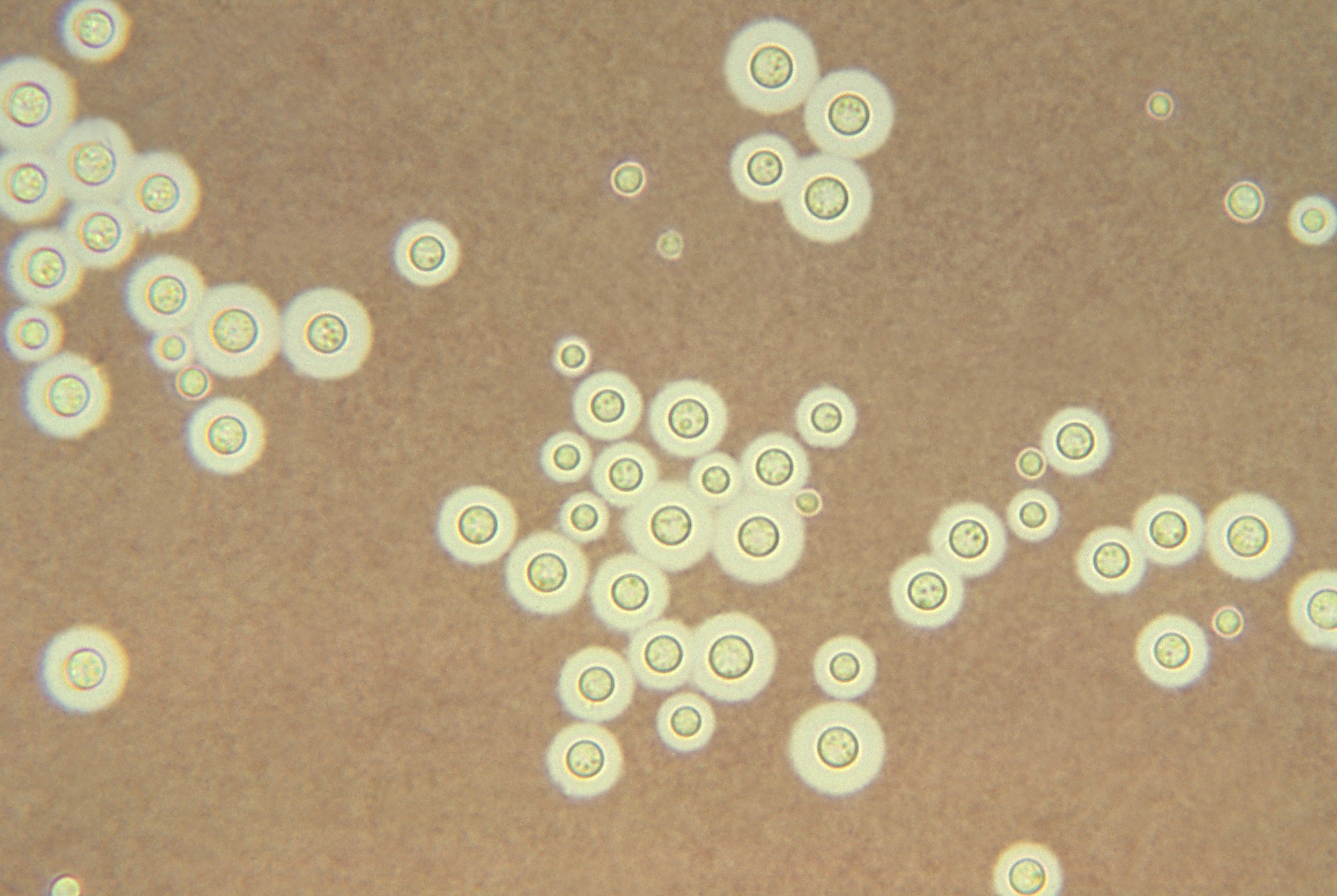9.3: Cryptococcus neoformans
- Page ID
- 123388
A lesser known but often more serious pathogenic yeast is Cryptococcus neoformans. Like many fungi, this yeast can also reproduce sexually and the name given to the sexual form of the yeast is Filobasidiella neoformans. It appears as an oval yeast 5-6 µm in diameter, forms buds with a thin neck, and is surrounded by a thick capsule. It does not produce pseudohyphae and chlamydospores. The capsule enables the yeast to resist phagocytic engulfment. The yeast is dimorphic. In its sexual form, as well as in its asexual form under certain conditions, it can produce a hyphal form.
Cryptococcus infections are usually mild or sub-clinical but, when symptomatic, usually begin in the lungs after inhalation of the yeast in dried bird feces. It is typically associated with pigeon and chicken droppings and soil contaminated with these droppings. Cryptococcus, found in soil, actively grows in the bird feces but does not grow in the bird itself. Usually the infection does not proceed beyond this pulmonary stage. However, in an immunosuppressed host it may spread through the blood to the meninges and other body areas, often causing cryptococcal meningoencephalitis. Any disease by this yeast is usually called cryptococcosis.
Dissemination of the pulmonary infection can result in severe and often fatal cryptococcal meningoencephalitis. Cutaneous and visceral infections are also found. Although exposure to the organism is probably common, large outbreaks are rare, indicating that an immunosuppressed host is usually required for the development of severe disease. Extrapulmonary cryptococcosis, in conjunction with a positive HIV antibody test, is another indicator disease for AIDS. People with AIDS-associated cryptococcal infections account for 80%-90% of all patients with cryptococcosis.
Cryptococcus can be identified by preparing an India ink or nigrosin negative stain of suspected sputum or cerebral spinal fluid in which the encapsulated, budding, oval yeast cells (see Fig. \(\PageIndex{1}\)) may be seen. It can be isolated on Saboraud Dextrose agar and identified by biochemical testing. Direct and indirect serological tests (discussed in Labs 16) may also be used in diagnosis.

Contributors and Attributions
Dr. Gary Kaiser (COMMUNITY COLLEGE OF BALTIMORE COUNTY, CATONSVILLE CAMPUS)

